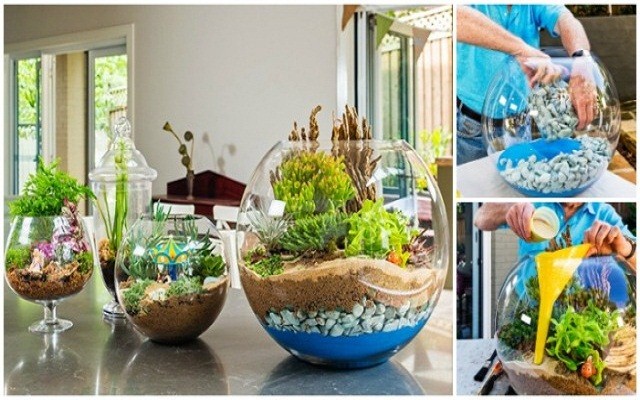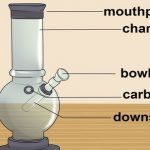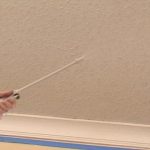In this article, we will discuss the best way to make a terrarium. It is basically a miniature landscape with real plants and even small animals like lizards or turtles. It looks a beautiful indoor garden inside a glass container. The plants used are low maintenance and are perfect for the people who don’t have a green thumb or those who don’t have time to care for a garden. The good thing is that you can place a wide variety of plants inside the glass containers. A terrarium also adds a bit of outdoor beauty and peace tonight tables, desks, or any place where space is limited.

Material You Will Need to Make Terrarium:
Things Required:
- A clear glass jar, bowl, vase, glass, or any interesting glass container you want
- Rocks, Recycled glass chunks, or pebbles
- Activated charcoal
- Potting soil appropriate for your plants
- Figurines, sticks or decorative items (optional)
- Moss (optional)
- Various small plants
- Scissors
- A scoop, spoon or shovel
- Gloves
Steps to Make a Terrarium:
1.) Prepare the Container to Make a Terrarium
In this step, you need to remove any price tags or stickers from the vessel and wash the interior and exterior thoroughly make sure that there is no unwanted stuff. Because any residues in the container can affect the health of your plants.
2.) Add Your Drainage Layers to Make a Terrarium
After cleaning your container, it is ready to fill the bottom with rocks or pebbles. They are needed to create a false drainage layer such that water can settle and not flood the plant roots. The effective depths of the rocks are totally dependent on the size of the container but aim for half or one inch.
3.) Add the Activated Charcoal
The charcoal looks like what you will expect it to and it is totally messy. You may get it as small granules or as shards but there is no difference both types will work perfectly. You do not need much charcoal but just enough to cover the rocks completely. The charcoal will improve the quality of the little world by reducing the bacteria, fungi, and odors.
4.) Add Soil to Make a Terrarium
This is quite an important step as you can’t just choose any type of soil. You need proper knowledge about what kind of plants you are using and select the soil according to that i.e. cactus and succulents need a special soil compared to other plants. You must add sufficient soil so that the plant roots will have the plenty of room to get in and then grow. The depth would be slightly greater than the height of the plant’s pot.
6.) Plant to Make a Terrarium
Now, let’s do the planting by taking out the plants out of the pot. Then, break up the hard soil ball until you get down to the roots. While breaking the plant into several parts then do it gently. Do not hesitate while trimming the roots of the plant if they are large to be accommodated. Don’t worry if you cut down the roots, they will automatically grow again. Place the plant roots in the soil. After placing the roots in the soil, add more soil around the top to cover it and compact the soil down around the base. Continue the planting process in the container and keep them away from the edges.
7.) Add Accessories to Make a Terrarium
Once the planting is done you can simply add little accessories like a blanket of moss, little figurines glass beads, old toys, sticks, shiny metal object, stones, or even a layer or rocks. It totally depends on upon you, how you can decorate your terrarium as it is your little world.
Tips & Tricks to Make a Terrarium:
- You should monitor the water level in the soil and frequently the dryness of the soil. For closed lids terrariums if water is dripping down then open the lid to let some evaporate. Similarly, you may need to add more water if it looks parched
- If leaves die then remove them from the terrarium as soon as possible to maintain the health of the ecosystem. Do not leave any damage leave or plant in the terrarium.
- Don’t place the terrarium in the direct sunlight. You should remember that these are essentially little greenhouses and direct sunlight can get trapped and scorch the plants.
















